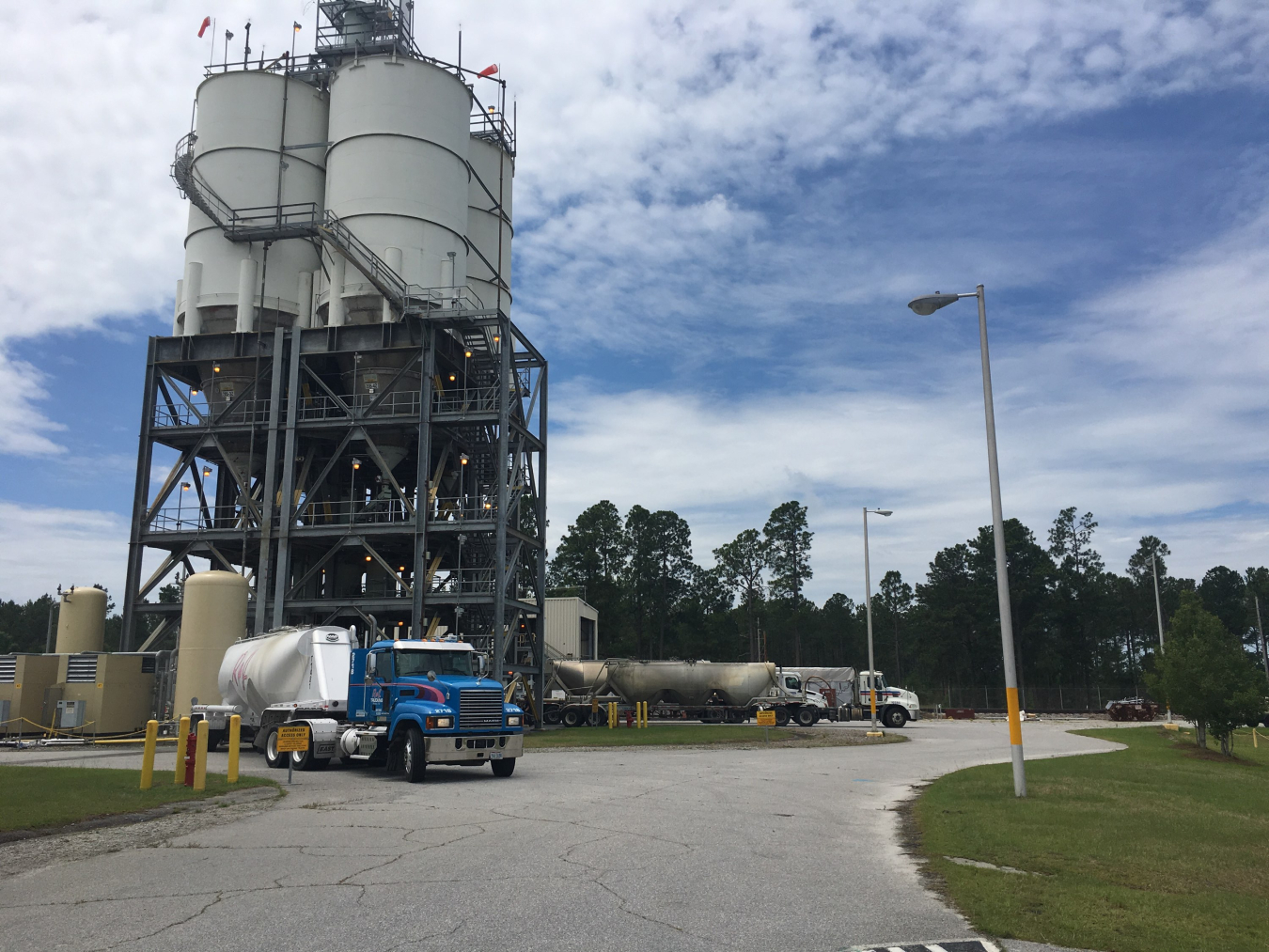The U.S. Department of Energy’s Office of Environmental Management (EM) and its liquid waste contractor at the Savannah River Site (SRS) have ...
September 22, 2020AIKEN, S.C. – The U.S. Department of Energy’s Office of Environmental Management (EM) and its liquid waste contractor at the Savannah River Site (SRS) have completed significant upgrades to accelerate treatment and dispositioning of decontaminated salt waste.
The Saltstone Production Facility (SPF) project, known as Enhanced Low Activity Waste Disposal (ELAWD), was timed to coincide with bringing the Salt Waste Processing Facility (SWPF) online to treat the majority of radioactive liquid waste at SRS.
Savannah River Remediation (SRR) operates the SPF, where decontaminated salt solution is mixed with dry materials to produce a cement-like grout. The grout is then piped to a nearby 32-million-gallon Saltstone Disposal Unit for safe, permanent disposal.
Rodney Blackmon, SRR’s Saltstone facility manager, said the facility’s biggest challenge has been ramping up to meet the future demands of SWPF, which will process greater quantities of salt waste at a much faster rate than previous interim facilities at SRS. Startup of SWPF is an EM 2020 priority.

Recent facility upgrades make it possible for three trucks to simultaneously unload cold feed materials at the Saltstone Production Facility at the Savannah River Site.
“The Salt Waste Processing Facility will be transferring seven to nine times more decontaminated salt solution per year than we have received from previous pilot plant operations,” Blackmon said. “With the completion of ELAWD, Saltstone is ready for its enhanced role in the liquid waste mission.”
ELAWD improvements included a new air system for increased capacity and reliability to supply air to move dry feed material; a new dust collector to provide the capability to unload three trucks simultaneously; and redesigned flow equipment in the dry materials feeding system for increased throughput.
DOE-Savannah River Assistant Manager for Waste Disposition Jim Folk said these improvements to the Saltstone facilities will help process the site's remaining salt waste, which fills over 90 percent of tank space in the SRS tank farms and are vital to advancing EM’s liquid waste mission.
“We expect these enhancements to enable our on-site legacy systems to safely keep pace with the SWPF treatment rate,” Folk said.
Media Contacts:
Sonya Goines
U.S. Department of Energy
(803) 646-2788, sonya.goines@srs.gov
Jim Beasley
Savannah River Remediation
(803) 679-0812, jim.beasley@srs.gov

